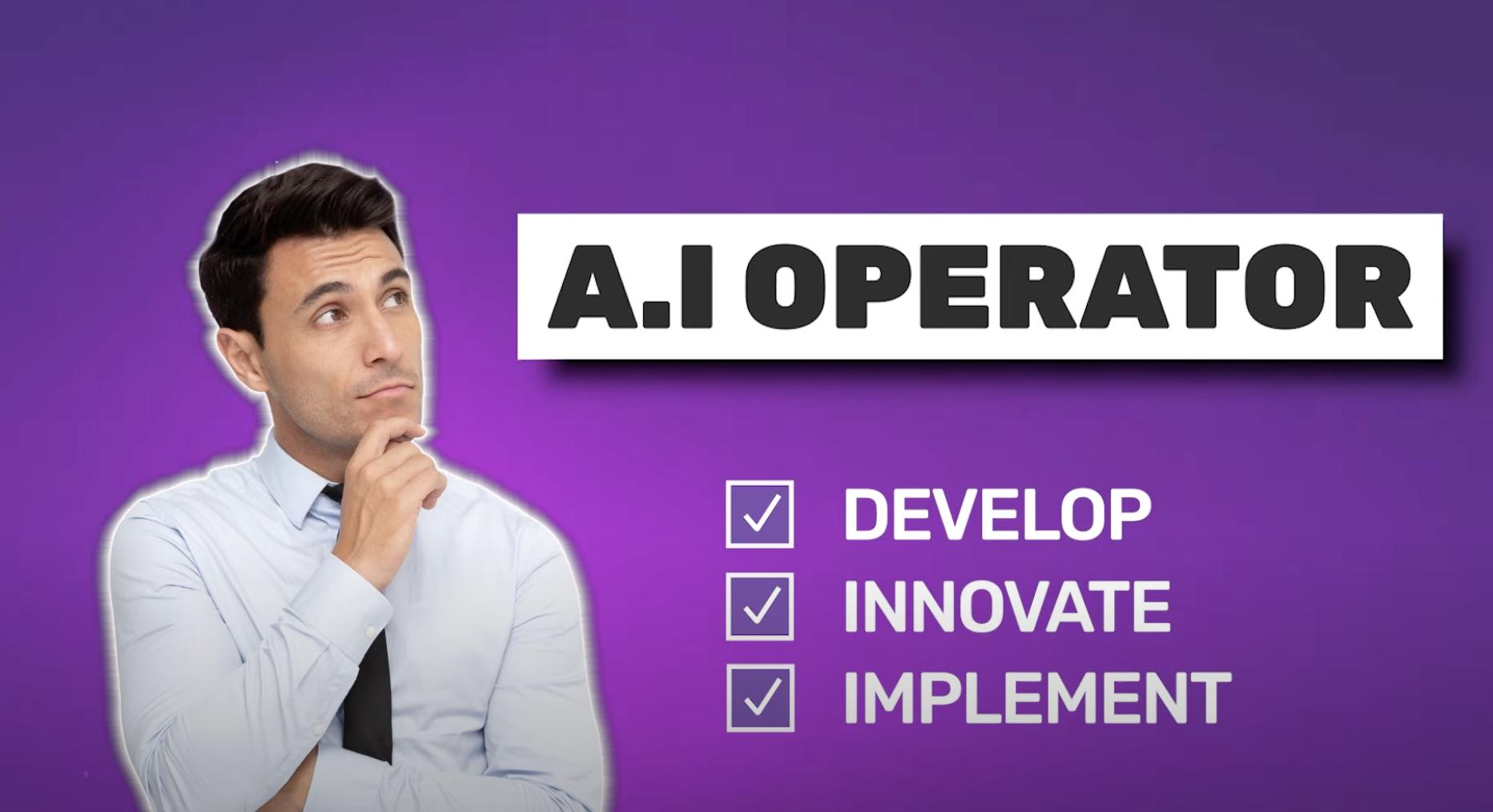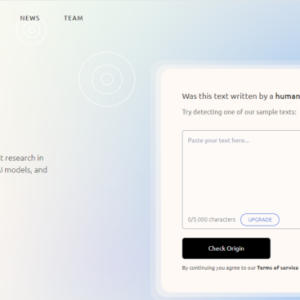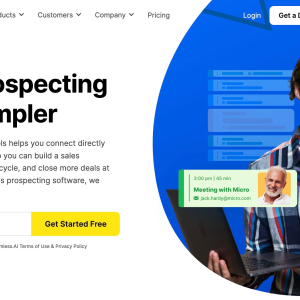Artificial Intelligence (AI) has become an integral part of modern businesses, providing organizations with the ability to automate processes, gain insights from vast amounts of data, and deliver personalized experiences to customers. However, successfully implementing AI at scale within an organization can be a complex and challenging task. It requires a strategic approach that involves careful planning, collaboration, and a deep understanding of the potential risks and benefits. In this article, we will explore the key steps and considerations involved in scaling AI within your organization, helping you navigate the AI landscape and unlock its full potential.
- Anyword Review: Is It The Best AI Writing Assistant For Copywriters?
- 15 Great and Helpful Ways You Can Use ChatGPT for Blogging!
- The Ultimate Guide to AI for Bloggers
- Motion App Review: Can This Helpful AI Tool Improve Your Productivity?
- ChatGPT Email Marketing Tips: 7+ Prompt Ideas for Awesome Emails
Thanks to the breakthrough in generative AI structures like ChatGPT, more companies are scaling AI with a lot more determination than ever before.
You are viewing: How to Go About Scaling AI in Your Organization
But what does it really mean to scale AI in an organization, and how can you execute this effectively?
In this post, we’ll take a look at the ways we’ve been scaling AI and give you actionable insights to ensure that you’re not just part of the artificial intelligence hype, but genuinely making your operations smarter and more efficient.
The Need for a Dedicated AI Operator
The fast-paced nature of today’s business landscape makes it imperative to have someone who is fully committed to the AI agenda. The “AI Operator” plays a vital role in the organization, focusing on the following:
- Scouring the news for the latest trends
- Developing test cases
- Initiating experiments
- Implementing AI-powered solutions

Whether this person is a tech-savvy individual or simply passionate about AI doesn’t really matter; what’s important is that they are driving the AI initiatives forward.
The rationale behind having a designated AI operator is simple: The world of AI is constantly and rapidly changing, with news cycles sometimes lasting only 24-48 hours. There’s an unspoken urgency to keep up with the updates and innovate continuously.
That’s why having a dedicated person on your team constantly keep their finger on the pulse of what’s happening with AI is crucial to stay relevant with up-and-coming business technology.
But if you’re a founder or a CEO thinking, “Hey, I can manage this!” — pause for a second. The role demands more attention than what your already overflowing plate can probably handle.
See more : Google Bard YouTube Integration: What Marketers Need to Know
If your company is on the tech-savvy side, you should think about hiring a full-time AI Operator. If you’re a smaller outfit, you might assume this role temporarily, but aim to delegate it as your company grows.
The Power of AI Working Groups
Once you have an AI Operator in place, the next level is to form an “AI Working Group.”
Picture this as a voluntary club within your company, brimming with individuals keen to drive AI initiatives. These are the cool kids on the block who are not just looking to better client results, but also internal processes. Here at Single Grain, our AI group has proven to be invaluable for sharing knowledge, discussing wins and losses, and brainstorming how to be more efficient.
The AI Working Group isn’t just a small community within your organization. It’s the embodiment of a culture that embraces AI and continuous learning. Imagine weekly meetings where everyone shares updates, ideas or even the latest AI fails, learning from each other in the process.
What’s the takeaway? Creating an AI Working Group isn’t merely an optional company activity — it’s an integral part of fostering a culture that lives and breathes new technology. Make it voluntary but enticing enough that people want to join.
Schedule regular meetings to keep the momentum going and be a voice of enthusiasm and encouragement for the greatness your brand can achieve by leveraging AI.
A Structured Yet Flexible Approach: AI Pods
In larger organizations, the approach to scaling AI may differ. You can create what’s known as AI “Pods” — miniature think tanks within the company that focus on leveraging AI tools in different domains, be it SEO, content or paid marketing.
These pods typically consist of an expert in the domain, a project manager and someone from operations. The diversity ensures that you’re not just exploring AI from a single angle, but incorporating it into various facets of the business.
What makes this setup effective? Whatever the pod creates — be it automated workflows or optimized systems — is shared across the entire organization, from different departments to various global locations:

See more : How AI Can Help Both Recruiters and Job Candidates
If you’re operating on a larger scale, the Pod system offers a multi-faceted approach to incorporating AI. Each Pod focuses on a different domain but shares its achievements and learnings with the rest of the organization.
Leadership & Timing: When to Jump In
It’s important to note that the push for scaling AI should come from the top. Leadership should be the main advocate because, well, the future waits for no one.
However, there’s also the question of timing. If your company is just starting off or is currently time-strapped, maybe putting AI on the back burner for now isn’t such a bad idea. After all, this technology is not a race. It’s a tool for enhancing business efficiencies, and rushing into it might do more harm than good.
You may find yourself worrying that if you aren’t chasing AI at breakneck speed, you’ll simply fall behind. You might be worried that your competitors are adapting to it faster than you are. Here’s the thing, though: Even if they are a few months ahead of you, you have to weigh the cost of being an early adopter as opposed to implementing AI when it is a bit more developed.
The AI landscape is changing so fast that what might take you a year to implement could be available off-the-shelf in a more effective, less expensive version a few months down the line. Patience here is more than a virtue; it’s also a strategy.
If you’re an established organization with ample resources, it’s high time to think about scaling AI. But if you’re just starting off or are crunched for time, maybe wait for the landscape to evolve a bit more. Your entry point might just be easier and more efficient once AI has had a little more time to distill.
Last Words on Scaling AI in Your Organization
Despite what many may think, AI is the future of business operations. From dedicated AI operators to company-wide AI Working Groups, the path to effective AI integration is as diverse as it is exciting.
Whether you’re a small enterprise or a larger corporation, there’s a strategy to fit your needs. The key is to understand where you are in your AI journey and to take steps accordingly.
So, are you ready to start scaling AI in your organization? With the right approach and framework, there’s nothing stopping you from wielding AI to further solidify your spot as an authority in your vertical.
For more insights and lessons about marketing, check out our Marketing School podcast on YouTube.
That’s a wrap on “How to Go About Scaling AI in Your Organization” We hope you’ve found a trove of useful insights and fresh perspectives. Your opinions and ideas matter to us—join the conversation below and share your take! Hungry for more tech insights? Dive into our diverse collection of articles where innovation meets practicality. Discover More AI Softwares.
Stay in the loop with the latest in AI and tech – your journey into the digital future continues at duanetoops.com.
#Scaling #Organization
Source: https://duanetoops.com
Category: AI





